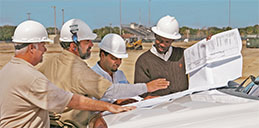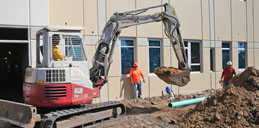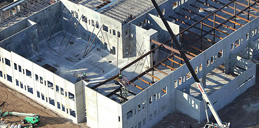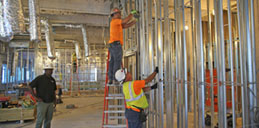How to Organize a Commercial Construction Project
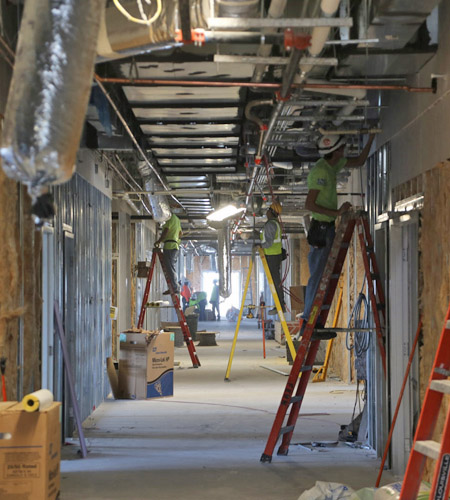 Commercial construction projects are often a complicated process. There are a lot of moving parts including vendors, equipment and contractors running around a construction site. You may also have government inspectors from different agencies in your local jurisdiction making sure the site is safe and is within code limits. But even the most complicated commercial projects can be drilled down to a manageable series of steps. By doing so will help keep you and your construction project on track increasing the odds that it will be completed on time and within budget. Here’s how to organize a commercial construction from pre-construction to post-construction:
Commercial construction projects are often a complicated process. There are a lot of moving parts including vendors, equipment and contractors running around a construction site. You may also have government inspectors from different agencies in your local jurisdiction making sure the site is safe and is within code limits. But even the most complicated commercial projects can be drilled down to a manageable series of steps. By doing so will help keep you and your construction project on track increasing the odds that it will be completed on time and within budget. Here’s how to organize a commercial construction from pre-construction to post-construction:
Create a Vision
The first step in organizing your commercial construction project is to put your vision down on paper. This will make it easier for you to explain your building concept to others like stakeholders, general contractors and architects. What do you want the project to look like? Where will you build? What is its function, i.e., office space, parking garage, retail store, etc.? It can be something as simple as a sketch on paper or you can use commercial drawing software to help get your vision across.
Discuss Project with Stakeholders
Now that you have a vision for your commercial construction project it’s time to discuss it with the stakeholders in your organization. Depending on the size of your company, your stakeholders may be a business partner or significant other, key employees, or a board of directors. Your project will stand a much better chance of getting off the ground when the stakeholders buy-in to your project. And they likely will also have ideas to share or prior experience that will be beneficial for the project.
Obtain Architectural Drawings/Blueprints
With the green light from stakeholders to proceed you will want to solidify your vision and obtain architectural drawings and blueprints from an architect with commercial construction experience. These renderings contain the specifications that your general contractor (and sub-contractors) will use to bring your vision to life.
Get Estimates and Hire a General Contractor
Make copies of your blueprints and get estimates from general contractors that have experience building your commercial project. You will also need to determine the contractor delivery method as this will have an impact on your project estimate and change orders that can increase construction costs down the road. A good general contractor will sit down with you to explain the advantages and disadvantages of the different delivery methods such as Design/Build, Hard Bid, Cost Plus and others. This will help you determine the most advantageous delivery method for your commercial construction project.
Submit for Permit Approval
Depending on the delivery method, you or your general contractor will need to submit plans to your locality to obtain any required building permits.
Arrange Financing
At the same time, you can also submit your project plans to your lending institution to obtain the required funding for your commercial project or open an escrow account if you are self-funding. The general contractor you hire may also have preferred lenders. This is a plus because lenders that have a proven track record with general contractors are more likely to approve the loan. This lowers the risk of the loan which may result in a lower interest rate for the financing of your commercial construction project.
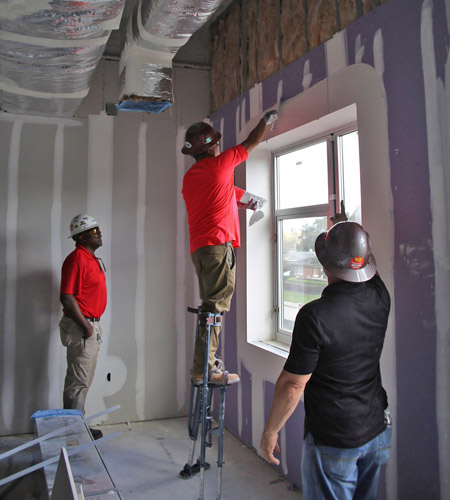 Supervise Construction Process
Supervise Construction Process
Your commercial construction project will run more smoothly when you communicate regularly with everyone involved. Plan to meet with your general contractor at least once per week for status updates and to make any necessary decisions that arise during the construction process. And keep stakeholders informed too. This will help eliminate any unnecessary surprises.
Prepare for Closing/Move-in
As your commercial project nears completion you will need to prepare for the final walk-thru and move-in. Make sure furniture, fixtures, employees and anything else you will need will be ready when its time to move-in to your new commercial building.


